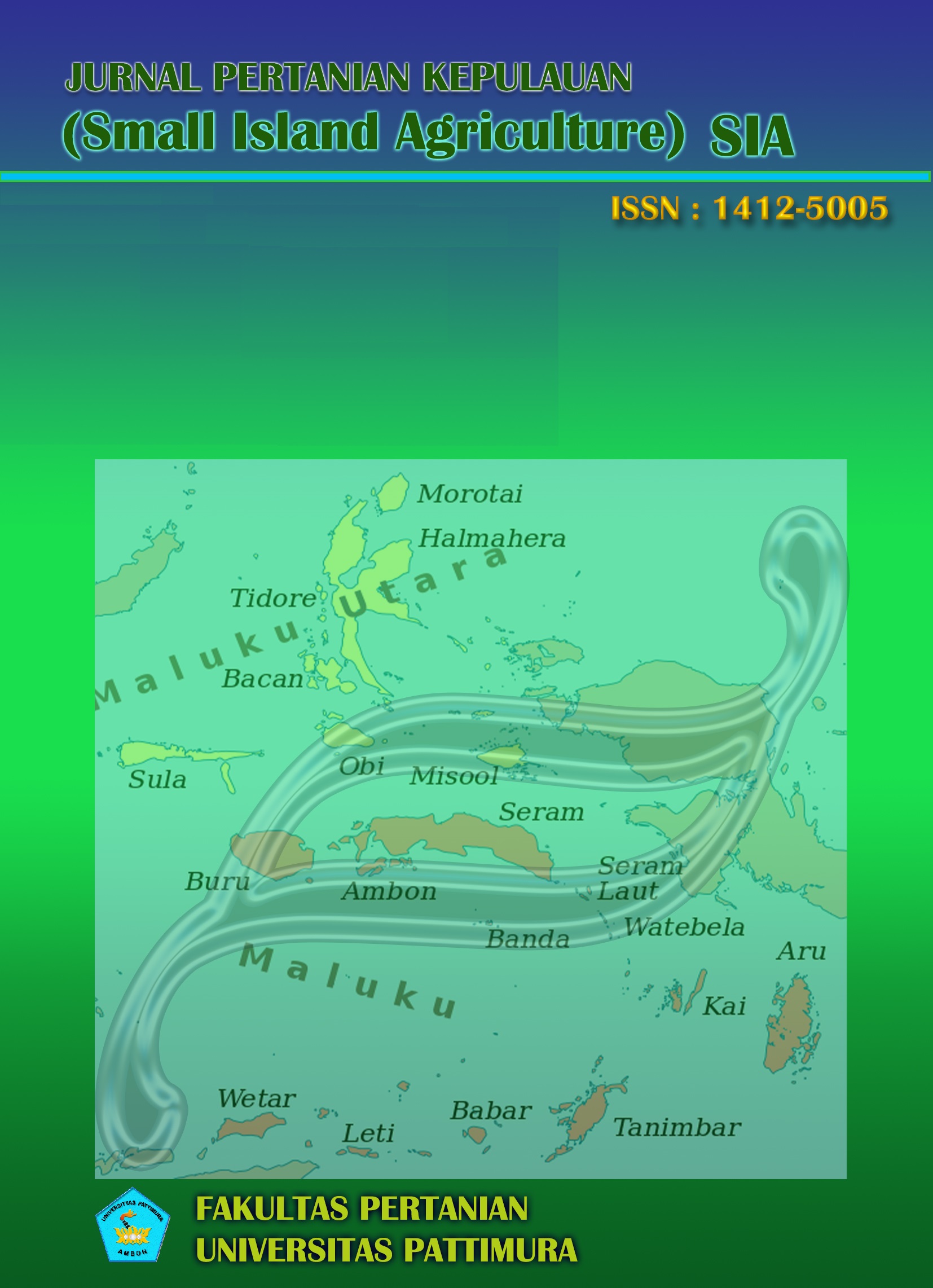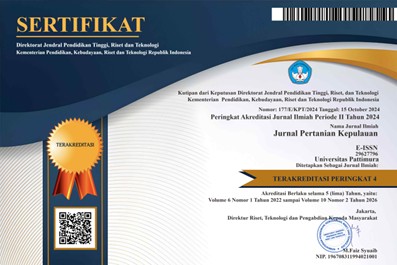Analisis Kondisi Iklim dan Pemanfaatannya untuk Penetapan Musim Tanam di Daerah Batabual Kabupaten Buru
Abstract
The determination of the growing season is closely related with the climate change that occurs in a region The study aims to determine the trend of changing the growing season in the Batabual Area, changes in the growing season that occur due to changes in rainfall, and alternative planting patterns in Batabual region based on changes in the growing season that occur. Data analysis consisted of (1) determining the climatic conditions of the region using the Algebraic average method from monthly rainfall data from the Buru meteorological climate station for the last 30 years 1991-2020 and (2) determining the planting season using the FAO method (1978). The results showed that based on average rainfall data, the growing season lasted for 10 months and 19 days (November to September 19 of the following year). However, if you use rainfall with a 75% chance of being exceeded, the growing season period only lasts for 8 months and 21 days (December – July 21 of the following year).
Downloads
References
Bey, A., & Las, I. (1991). Strategi Pendekatan Iklim dalam Usaha Tani. Dalam Kapita Selekta dalam Agrometeorologi. Dirjen Pendidikan Tinggi Depdikbud. Jakarta.
[BPPP] Badan Penelitian dan Pengembangan Pertanian. (2011). Pedoman umum adaptasi perubahan iklim sektor pertanian.
[BPS] BADAN PUSAT STATISTIK. (2021). Kabupaten Buru Dalam Angka. BPS Kabupaten Buru, Namlea.
[BPS] Biro Pusat Statistik Kabupaten Buru. (2021). Statistik Kecamatan Batabual.
[FAO] Food Agriculture Organization. (1978). Methodology and Results from Africa. Report on the Agro-Ecological Zones Project. Report No.48/I. FAO, Rome. (No. 481; Report on the Agro-Ecological Zones Project).
Laimeheriwa, S. (2014). ANALISIS PELUANG KEJADIAN DERET HARI KERING SELAMA MUSIM TANAM DI KOTA AMBON. Agrologia, 3(2), 83–90.
Laimeheriwa, S. (2015). Analisis data iklim dalam bidang pertanian: peluang curah hujan, masa tanam, neraca air lahan dan klasifikasi iklim wilayah. Fakultas Pertanian Unpatti, Ambon.
Loran, & T.M. (1991). Climate and physical resources of Maluku Province. Working Paper Environmental Profile Maluku.
Manik, T. K. (2014). Klimatologi Dasar (1st ed.). Graha Ilmu.
Nangimah, S. L., Laimeheriwa, S., & Tomasoa, R. (2018). Dampak fenomena El Nino dan La Nina terhadap keseimbangan air lahan pertanian dan periode tumbuh tersedia di Daerah Waeapo Pulau Buru. Jurnal Budidaya Pertanian, 14(2), 66–74. https://doi.org/https://doi.org/10.30598/jbdp.2018.14.2.66
Nurdin. (2011). Antisipasi perubahan iklim untuk keberlanjutan ketahanan pangan. Jurnal Dialog Kebijakan Publik, 4, 21–32.
Oldeman, L. R. (1975). An agroclimatic map of Java. Contr. Centr. 17, Bogor. 22p. Contr. Centr. Res. Inst. Agric.
[PPT] Pusat Penelitian Tanah. (1983). Jenis dan Macam tanah di Indonesia Untuk Keperluan Survei dan Pemetaan Tanah daerah Transmigrasi. Proyek PenelitianTanah Menunjang Transmigrasi(P3MT).
Schulz, E. F. (1980). Problem and Applied Hydrology. Water Res. Publ.
Uspessy, J. F. (2020). Penentuan musim tanam berdasarkan neraca air lahan di Daerah Saumlaki Pulau Yamdena [Skripsi]. Universitas Pattimura.





.png)


